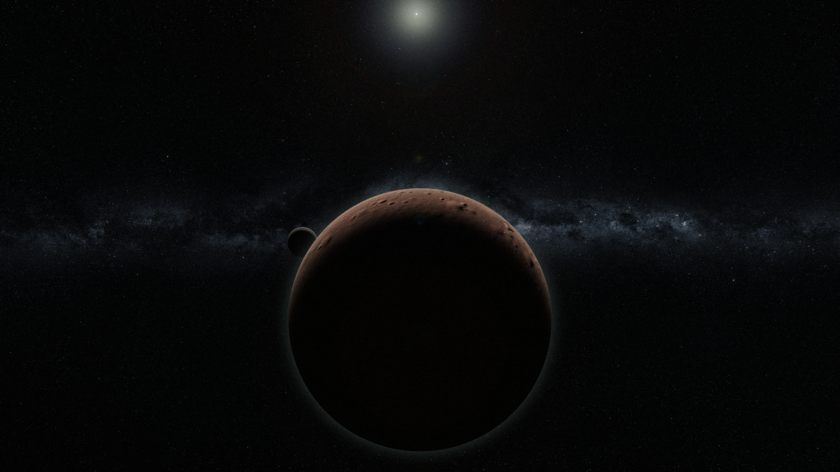
More than a decade ago, scientists discovered a minor planet in the outer reaches of the solar system, which was assigned the name (225088) 2007 OR10 by default. Fast forward to the present, and the planet has still not received an official moniker, making it the largest unnamed world in the solar system.
Now, three of the astronomers who helped discover 2007 OR10—Meg Schwamb, Mike Brown and David Rabinowitz—have announced a campaign in which the public is being asked to help choose a suitable name for submission to the International Astronomical Union (IAU.)
"It's time to give 2007 OR10 a name," the scientists said in a Planetary Society statement. "The IAU formally bestows permanent names upon Solar System minor planets, but the discoverers have a roughly 10-year period after the body has a well-determined orbit to suggest a name for the IAU to consider."
"We have 3 naming suggestions that fit the IAU naming regulations and are associated with mythological creatures and figures that reflect aspects of 2007 OR10's physical properties," they wrote. "The option with the most votes will be the one that we will formally submit to the IAU for consideration."
The three suggested names are:
Gonggong
"Gonggong is a Chinese water god with red hair and a serpent-like tail. He is known for creating chaos, causing flooding, and tilting the Earth."
Holle
"A European winter goddess of fertility, rebirth, and women. Holle makes snow by shaking out her bed. She is a patroness of household crafts especially spinning. She is linked to the Yuletide (winter solstice) season associated with mistletoe and holly, evergreen plants bearing red berries."
Vili
"Part of the Æsir, Vili is a Nordic diety. Vili, together with his brothers Odin and Vé, defeated frost giant Ymir and used Ymir's body to create the universe. Ymir's flesh and bones were forged into the Earth, with Ymir's blood becoming the rivers and oceans."
To vote for your favorite name suggestion, click here. The deadline for submissions is 11:59 p.m. PDT on May 10, 2019.
2007 OR10 was discovered on July 17, 2007, as part of the Palomar Distant Solar System Survey. The world is located in the Kuiper belt, a vast disk of small bodies that circle the sun beyond the orbit of Neptune.
Scientists estimate the planet to be around 777 miles in diameter, which makes it smaller than Pluto and Eris—the first and second largest dwarf planets in the solar system, respectively. It is believed that 2007 OR10 has sufficient gravity to be round, making it a dwarf planet.
Data collected by researchers suggests that 2007 OR10 has one of the reddest surfaces in the known Kuiper belt. Meanwhile, it is thought to contain large amounts of water ice, and possibly even methane ice.
Uncommon Knowledge
Newsweek is committed to challenging conventional wisdom and finding connections in the search for common ground.
Newsweek is committed to challenging conventional wisdom and finding connections in the search for common ground.
About the writer
Aristos is a Newsweek science reporter with the London, U.K., bureau. He reports on science and health topics, including; animal, ... Read more
To read how Newsweek uses AI as a newsroom tool, Click here.








